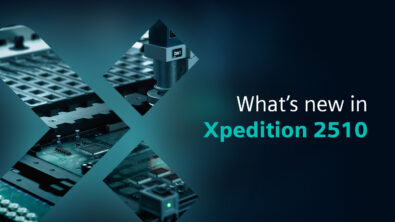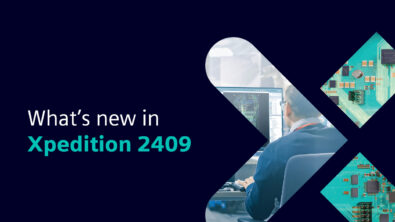How our users solve unique electronics design challenges

The annual User2User events bring together Siemens EDA users for a day of learning and connecting with peers, and since many of the technical sessions are delivered by customer “super users” they also offer a peek into design challenges across different industries.
Even if you did not attend the event in May 2024 – here’s an opportunity to watch presentations by aerospace company Spacechips, power module designer and builder Vincotech and electronics design provider Sintecs, to learn how Siemens software helps them overcome distinct challenges and enables innovation.
Enabling autonomous decision-making in space
In the rapidly evolving field of space technology, autonomous decision-making is becoming essential. Earth observation satellites produce vast amounts of data from various sensors, which is crucial for dealing with catastrophes, such as wild fires. However, communication with Earth is limited, causing delays in data processing and therefore in decision-making.
The challenges are similar for space debris retrieval space crafts, which need to identify different types of debris, and even military and defense satellites that need to infer the intent of orbiting objects: are they hostile or friendly?
The solution: smart, real-time, in-orbit processing using AI and ML, allowing informed real-time insights – in space.
In 2019, Spacechips was asked to develop a smart on-board processor for an earth observation company. They needed to make it fast and with 1.5TB of on-board, non-volatile storage. How did they include all that storage? And what were the unique challenges of designing a processor for space applications?
Dr. Rajan Bedi, CEO and founder of Spacechips, explains it all in his lecture at the U2U event:
Stepping up from DDR4 to DDR5
DDR5 is not just the next generation of DDR4: it’s 50% faster, with much higher capacity of up to 128GB, and more efficient, to mention just a few differences.
Similarly, when is comes to designing and verifying DDR5, one cannot simply apply the same methods as those that are sufficient for DDR4. More simulations are needed to ensure that the design will work.
Hans Klos, CEO and founder of Sintecs, walks us through the differences between DDR4 and DDR5 simulation, and how Hyperlynx supports the additional simulation required for DDR5:
Automating optimization in power module design
Demand for electronics is on the rise, and power module producers like Vincotech cannot hire enough engineers to meet market demand. It is also difficult to predict the lifespan of products, reliability and durability, requiring better simulation and optimization methods – with software.
Using the Siemens design flow, it is possible to achieve automatic optimization, cutting the number of design iterations needed for an optimized power module. But what does automatic optimization mean?
As Siemens EDA application engineer Wilfried Wessel explains in this 30-minute presentation, it’s not a “magic button” that optimizes products; rather, it is a combination of pre-determined constraints and variables, a clearly defined question and an optimization goal. He presents a theoretic example tested by Siemens, followed by a real-life example of automatic optimization done with Siemens customer Vincotech.
Cutting manufacturing costs – through decoupling optimization
Sky is a is a British broadcaster and telecommunications company that provides television, internet, fixed line and mobile telephone services. It develops its set-top boxes and streaming devices in-house, and was looking to cut manufacturing costs by reducing the number of capacitators used in their products.
By using qualified parts list (QPL) to streamline the assignment of capacitator models, as well as Decoupling analysis, Sky was able to cut the number of capacitators used – by over 50%!
To learn how they did it – watch the presentation by Sky senior hardware engineer Christopher Curtin:


